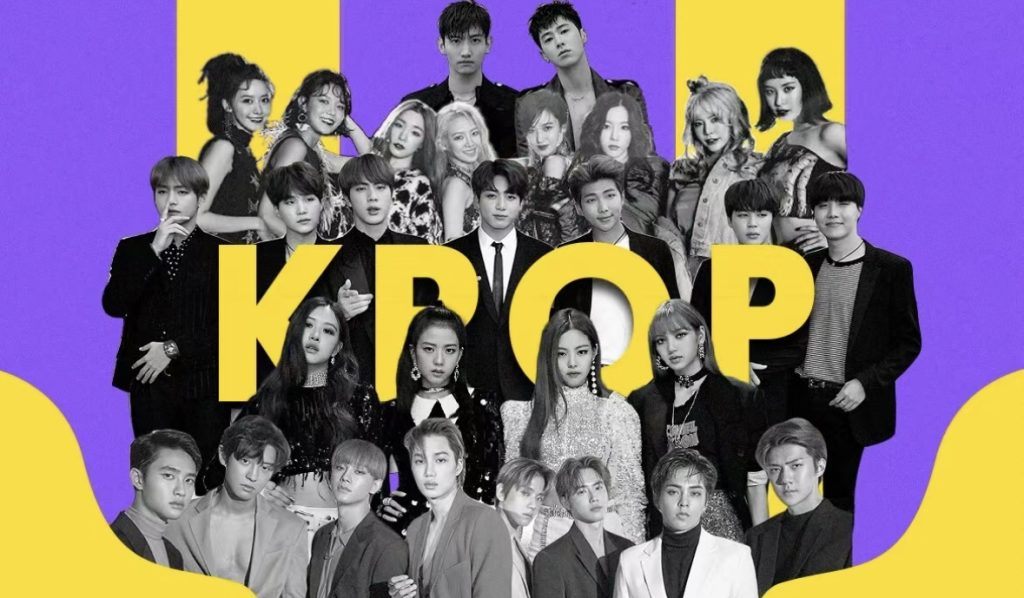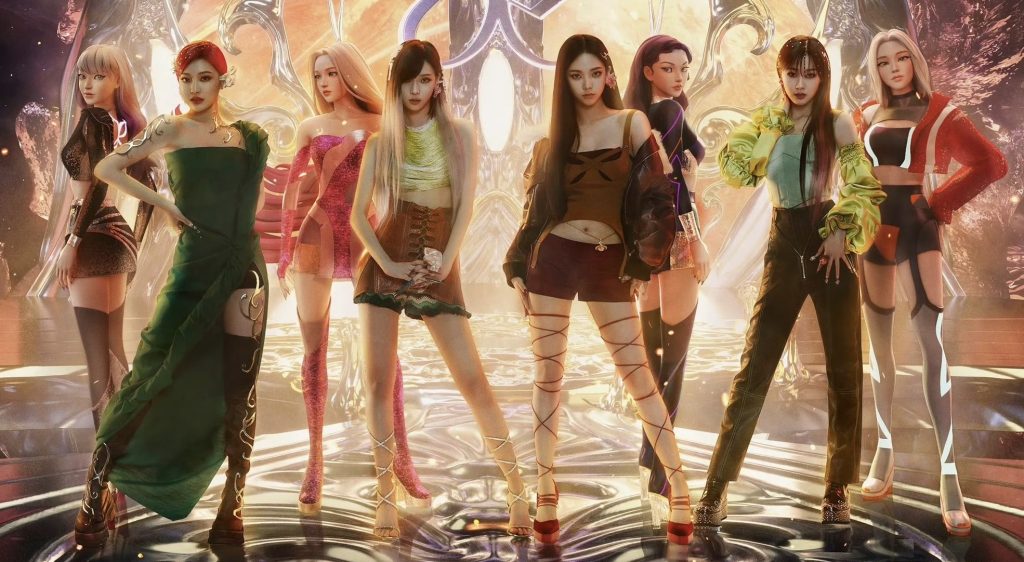
Kpop has now break the national bound and become a global phenomenon, gaining millions of fans worldwide. In this blog, I’m going to talk about what exactly makes K-pop so successful on the global stage? And how do music, visual art, social media work together to create such a powerful cultural force?
Music as a Universal Language
K-pop’s music is the foundation of its global success, combining different types of music like hip-hop, EDM and R&B to create a pop song that appeals to global audiences. But it’s not just the music itself, it’s the way K-pop is produced and distributed that makes it so unique.
Those music produced by K-pop groups like BTS and BLACKPINK is heavily influenced by Western music styles, but they didn’t abandon their Korean roots. The usage of English lyrics in their songs also helps them reach to global audiences. This hybridization reflects a key idea in the theory of “cultural hybridity”, where global and local elements merge to create something new. K-pop is a perfect example of this phenomenon.
Visual Art
The visual aspects of K-pop, especially in MVs, play a vital role in creating unique and immersive experience. From attractive dance choreography to stunning sets, costumes and make-up, K-pop MVs are becoming works of art. Some MVs even incorporate animation to enhance their storytelling. For example, the concept of girls group AESPA involved their virtual avatar called “ae” presenting each of the members.

Virtual storytelling in K-pop ties into the “attention economy”, with endless content available online, K-pop groups use high production values and striking visual arts to grab audiences attention. In an era where visuals dominate, K-pop excels at creating eye-catching content that encourage repeat views and engagement.
Social media
Talking about the global success of K-pop, one thing can’t leave without is social media. Social media has been an essential part of K-pop’s worldwide spread. Fans actively engage in online communities, sharing creative content, organizing fan activities and even participating in viral “challenges”. For example, the dance challenges on TikTok, where users recreate choreography from popular K-pop songs. And idols would also participate in each others challenges. These challenges encourage the participation and general massive visibility for K-pop groups.
De-Koreanization
While K-pop spreads globally, there’s also a process of “de-Koreanization” happening. There are more The emphasis on appealing to a global audience means that some of the traditional Korean elements are being downplayed in favor of more international styles. This raises questions about the future of K-pop: Will it lose its Korean identity as it becomes more globalized?


Perfectly explains why k-pop has a great global impact in terms of global significance, visual arts and digital media.It also fits the title “culture industry” and introduces the cultural history of Korea.And I strongly agree that the success of Korean k-pop cannot be separated from the fusion of some English cultures, a point I like very much.Because I think that the history of culture is not just the history of a particular country’s culture or some independent culture.The history of culture is the transmission and fusion of individual cultures, thus forging a better and deeper culture.Secondly, as you said, k-pop culture cannot be spread without social media either.This also shows the importance of social media for the transmission of cultural history.In conclusion, your post very clearly shows the way k-pop culture is passed on.